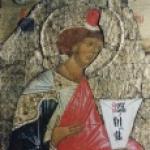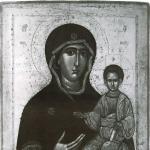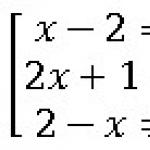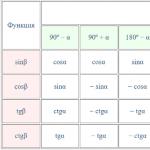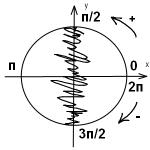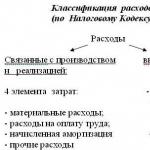Complete collection and description: what is the prayer om namo bhagavate vasudeva about for the spiritual life of a believer.
It can free our minds and moods from bad thoughts. Regular recitation practice teaches us complete spiritual freedom: it can free us from the cycle of rebirth and helps us realize ourselves as the embodiment of the transcendental divine principle.
Meaning of Om Namo Bhagavate Vasudevaya
Om Namo Bhagavata Vasudeva is a mantra that personifies the worship of God, Bhagavata Vasudeva. A mantra that mentions the name of a god is recognized as the most powerful. One of these is Om Namo Bhagavate Vasudevaya. This mantra is also called the “twelve-faced vaya”. Om Namo Bhagavate Vasudevaya appeared before the four Vaishnava sampradayas arose. This mantra, according to the descriptions of its functions, can enhance the development of the mind and open consciousness.
Giving up everything else and all ideas of righteousness to surrender to me (Krishna) exclusively. I (Krishna) will deliver you from all sins, do not despair.
Krishna also declared “Everyone should recite Om Namo bhagavate vasuda daily because I will stand behind him. I answer the call of my heart immediately and invariably. Look at me as your duty. I am ready for those who strive for their responsibilities. Believe the positive in me.”
Om namo bhagavate vasudeva is known as the mukti or liberation mantra. This is a powerful spiritual formula for achieving freedom. Consistent use of this mantra can ultimately even free us from cycles of rebirth. In this way, it softens karma so that we can make true choices in our lives. Truth is a choice, not just reacting to desires with hostility.
All we are is a vibration. The entire cosmos is a vibrational continuum, and embodied life is the material expression of the vibrational flow. When this oscillatory flow is disrupted, the imbalance results in the creation of disharmony in the environment or a lack of ease in the physiology.
Vibration through speech is the main thing in this tradition. Singing helps bring us into balance.
Mantra is a Sanskrit word with many connotations:
Another, more poetic view of mantra chanting: The practice of mantra actually unites the flesh of the body with sound. Subtle cells of complex nerve bundles are constantly exposed, capturing the flesh with vibrations of divine sound.
Meaning of bhagavate vasudevaya mantra
There are several translations of the meaning of the namo mantra, the main translation is dedicated to the god Krishna and sounds like this: “Lord, may I reach your lotus feet.”
Otherwise, the mantra is translated as: “O my Lord Sri Krsna, son of Vasudeva, O all-pervading Personality of Godhead, I offer my respectful obeisances unto You.”
If a person wants to obey the elements of the Universe or worship it, then he pronounces Namo.
Bhagavate - has three meanings: the first in Sanskrit sounds like “Lord of the universe.” The second means “one who becomes divine.” Third, it is translated as “masculine.”
Vasudevaya means the named name of the god Krishna, the son of Vasudeva, he represents the ancient family of Vasu. Vasu is an ancient family name translated as “kind”. This is a caste of gods, each of whom represents a certain natural phenomenon. All Vasu gods are included in the ancient Indian pantheon of gods, consisting of 33 celestial beings.
Visitor reviews
3 comments
This is a mantra from Vishnu Purana, 100%
God is the source of all worlds and all living beings. Vasudeva - literally means "Lord (deva) of all that exists (vasu)." When God manifests His aishvarya (divine greatness), He appears in the forms: Narayana, Nrsimha, Vishnu, Rama. And when God shows His madhurya (special charm), He appears in the form of Krishna. The name Vasudeva refers to the aspect of aisvarya, therefore the mantra “Om Namo Bhagavate Vasudeva” is an appeal to Narayana and Vishnu. One who chants this mantra develops a relationship with Narayana and Vishnu, but not with Krishna. Vishnu bhaktas follow. lives are reincarnated in the material world, because Vishnu rules the material world. Narayana bhaktas incarnate in Vaiknuthas, in the spiritual world. Krishna bhaktas incarnate in Goloka, the planet of Krishna. But for this, Krishna bhaktas need to develop madhurya bhava through the madhurya mantra.
“Om Namo Bhagavate Vasudevaya” is a mantra for worshiping Vishnu and Narayana.
This is aisvarya mantra and it develops aisvarya bhava, the vaikuntha mood.
To develop relationship with Krishna, he is worshiped with madhurya mantras,
to develop the mood of Vraja.
ADD COMMENT Cancel reply
(c) 2017 Fortune telling, love spells, conspiracies
Copying materials is permitted only with an active link to the source
You may use any materials obtained by you using Nagadali at your own peril and risk.
Om Namo Bhagavate Vasudevaya - mantra of communication with Krishna
The mantra Om Namo Bhagavate Vasudevaya consists of 12 syllables, so it can be called the dvadasha-akshara mantra. In terms of the time of its appearance, this sacred text surpasses the Vaishnava teachings of the sampradaya.
In the text of the Puranas, namely in the Bhagavata Purana, it is noted as the main one.
The meaning of the mantra
Contact Krishna
When turning to the mantra, every thinking person has the question of what the Om Namo Bhagavate mantra gives, what it means. An approximate translation of this text is “I offer my respects to Lord Vasudeva.” Krishna is called this because he belonged to the Vasu dynasty and was the son of Vasudeva.
- Om - I ask God.
- Namo - I obey God.
- Bhagavate - God has the power to calm everything. Bhagavate can be translated as "one who will become God" or as "masculine."
- Vasudevaya is one of the names of Krishna.
Om Namo Bhagavate Vasudevaya is a way to cleanse yourself, learn higher values, develop imagination, memory, and intellect. But its beneficial effect on a person is not limited to the sphere of spirituality and intellect. Favorable circumstances will surround the material side of life of the person who recites this mantra. This includes self-realization, success in business, and harmonious relationships with the world. Such an impact is associated with the highest meaning of the divine essence.
God is everywhere, the purity of his consciousness fills the whole world without exception. This is exactly what one who turns to the mantra Om Namo Bhagavata Vasudevaya should feel. Another sphere of influence of the Om Namo Bhagavate Vasudevaya mantra is intuitive abilities. The development of intuition gives a person the opportunity to better navigate the world. And most importantly, obtaining psychological balance, which is so difficult to achieve in our time.
Rules for reading the mantra
Om Namo Bhagavate Vasudevaya
The mantra Om Namo Bhagavata Vasudevaya should be used regularly. You need to read it for at least 15 minutes a day. In this case, the result can be felt quite quickly. The result is different for everyone. But in any case, it is positive and pleasant both for the person himself and for his environment. Someone will be filled with inner beauty, someone will become lucky. Whatever comes through hard work will quickly double thanks to the sacred text Om Namo Bhagavate Vasudevaya.
To obtain the desired result, each word must be pronounced clearly, beautifully, melodiously. Mistakes are not allowed. Some believe that there are many similarities between mantras and Christian psalms. These are texts that help you establish a connection with God. Therefore, every sound must be treated with great care. Indeed, unlike psalms, where the meaning comes first, in mantras the sound is much more important. It is the combination of sounds that causes the necessary vibrations in the sound fabric of the Universe. In the combination of sounds of Om Namo Bhagavate Vasudevaya lies the opportunity to send your prayers to the god Krishna.
At the same time, “Om” is no longer pronounced as “Om”, but closer to “Aum”, where “A” is the material world, “U” is the Energy world, “M” is the spiritual world. In general, “Om” symbolizes the unity of the 3 worlds. This should be followed by an unpronounceable sound, which symbolizes the Beyond World, standing apart from the unity of the 3 worlds. “Namo” speaks of admiration and respect; it sounds calm and even. "Bhagavate" can mean something Sublime. Pronounced with a raised voice. So, by working on the sound, you can ensure that higher powers hear your prayer and Om Namo Bhagavate Vasudevaya will not sound in vain in your heart.
The writing is on the wall
This mantra can free our minds and moods from bad thoughts. Regular recitation practice teaches us complete spiritual freedom: it can free us from the cycle of rebirth and helps us realize ourselves as the embodiment of the transcendental divine principle.
– the first in Sanskrit sounds like “Lord of the universe.”
– The second means “one who becomes divine.”
– Third, it is translated as “masculine.”
Veda.Co.Ua Encyclopedia
- home
- Bhajans and Prayers
- Om Namo Bhagavate Vasudevaya
Om namo Bhagavate Vasudevaya
ॐ नमो भगवते वासुदेवाय
Om namo Bhagavate Vasudevaya
"O my Lord Sri Krishna, son of Vasudeva, O all-pervading Personality of Godhead, I offer my respectful obeisances unto You."
Ohm– The primordial sound of the universe, from the vibration of which it appeared. What matters here is turning to the Lord.
Namo– Obedience, greeting or bow to the Universe. Namo also means the extra-personal aspect of the Divine, the extra-personal aspect.
Bhagavate– Lord of the Universe” in Sanskrit; one who becomes divine; masculinity.
Vasudevaya– The name of Krishna, as the son of Vasudeva, and also as a representative of the Vasu family, into which all Avatars are born.
This mantra, transmitted by spiritual mentor Narada to a little five-year-old boy, is associated with the famous story of Dhruv, which is described in the pages of Srimad Bhagavatam 4 cantos. We begin any lecture with this mantra of worship of the Supreme Lord Vasudeva, thereby expressing our respect and asking the Lord to come to our aid in the matter of enlightenment and devotional service.
Encyclopedia
Veda © 2013 – 2015. All rights reserved. SORBAT website creation
What does the mantra “om namo bhagavate vasudevaya” mean, why is it recited?
OM NAMO BHAGAVATE VASUDEVAYA - this mantra is read to get closer to the spiritual, when studying some literature, when deciding on the correctness of a spiritual choice. Mantra of guidance, enlightenment, understanding.
OM is the basis. This is the bija mantra. Bija means seed.
A sprout grows from a seed. Thus the sound OM gives rise to everything.
NAMO means respect.
BHAGAVATE is the supreme personality.
Vasudevaya is the name of Krishna's father, Krishna himself, who is believed to come from the lunar dynasty.
In general, mantras are divided into those that were invented by man and given to man (by God). It is believed that this mantra given to a person.
The mantra OM NAMO BHAGAVATE VASUDEVAYA is not locked. In any case, I have not come across such information or any warnings.
This mantra can be performed together:
The mantra performed by Deva Premal sounds very beautiful. But not everyone can sing along:
The mantra is sung to get closer to the spiritual, to feel like a part of the Universe, in order to develop spiritually. This mantra is considered to be the main mantra of Mahavishnu.
There is a complete translation of this mantra:
The Great Dvadasha Akshara Mantra (12 syllable mantra), which is translated as follows:
O my Lord Sri Krishna, son of Vasudeva, O all-pervading Personality of Godhead, I offer my respectful obeisances unto You.
The narration of Srimad Bhagavatam begins with this mantra.
This mantra, transmitted by spiritual mentor Narada to a little five-year-old boy, is associated with the famous story of Dhruv, which is described in the pages of Srimad Bhagavatam 4 cantos. With this mantra of worship the Supreme Lord Vasudeva one expresses one's respects and requests the Lord to come to his aid in the matter of enlightenment and devotional service.
There are many translations of this mantra. Some believe that this is a mantra for worshiping Krishna, the son of Vasudeva. But personally, I prefer the non-religious translation of this mantra, where:
Om is someone inside me who realizes the Unity of all That Is, the universal “Yes”, acceptance,
Namo - greeting, respect,
Bhagavate - divinity, divine,
Vasudevaya - God within me.
Thus, this mantra can be translated as: “Welcome the divinity within me.”
And then this mantra helps us to feel our unity with God, with the Universe, with all other Divine souls, to realize our true divine nature, the nature of our soul.
OM NAMO BHAGAVATE VASUDEVAYA
Om Namo Bhagavate (Om Namo Bhagavate)
Om Namo Bhagavate Vasudevaya
Om Namo Bhagavate Vasudevaya
Om is the name of Someone inside me who realizes the Unity of All That Is.
"Bhagavate"- this is divinity, piety.
"Vasudevaya"- the individual aspect of God that lives in each of us.
Deva: "This mantra honors our inner Divinity, which every living being carries within itself. It is believed that repeated repetition of this mantra will lead to enlightenment and awareness of one's true nature. I personally always feel great joy when I repeat it. It is very dear and close to me. "
Regular reading of this mantra gives us complete spiritual freedom, helps us realize our divinity, and frees us from the cycle of rebirth.
The mantra also helps to attract a pure, bright soul, which will move into your child if you sing it during pregnancy.
Mantrotherapy
Om Namo Bhagavate Vasudevaya
"Om Namo Bhagavate Vasudevaya" ( I offer my respects to Lord Vasudeva).
Vasudeva is one of the names of Krishna, a descendant of the great Vasu dynasty, the son of Vasudeva.
This is the main mantra of Mahavishnu, the purpose of which is to develop divine love. This mantra, like many others, contains the name of God. By turning to the Lord by chanting a mantra, we receive incomparable benefits.
This mantra gives spiritual enlightenment, self-realization, awareness of higher values, spiritual pleasure, success in all endeavors.
Audio: Adobe Flash Player (version 9 or higher) is required to play this audio. Download the latest version here. In addition, JavaScript must be enabled in your browser.
This mantra gives the feeling that God is everywhere and manifests the supreme knowledge of Vasudeva. An atmosphere is created that feels like God is pure consciousness everywhere. The presence of pure consciousness of God is felt in all objects and within one’s own consciousness.
Repeating the mantra helps to gain psychological balance, develops intelligence, memory and imagination, improves intuition and promotes the development of musical abilities.
Lyrics of the song Monday Mantra – Om Namo Bhagavate Vasudevaya
1 person think the lyrics of the song are correct
0 people think the lyrics are wrong
"I'll tell you my old prayer. It keeps the outer being very calm."
Namo: I obey Him
Bhagavate: He has the power to calm everything." Om Namo Bhagavate Vasudevaya
& I’ll tell you my old prayer. It keeps the outer being very calm."
Namo: I obey Him
Bhagavate: he has the power to calm all. &
What is the prayer om namo bhagavate vasudevaya about?
Magic, Self-knowledge, Clairvoyance
A mantra is a sacred code that carries a powerful charge of positive energy. The secret of the ancient texts lies in strong vibrations, which, acting on the human body, free it from negative energy that prevents the receipt of all kinds of benefits. Translated from Sanskrit, “manna” means mind, and “tra” means liberation. Thus, the mantra frees the human mind and effectively clears the consciousness of negativity.The meaning of the sacred formula OM The ancient mantra OM is a powerful combination that has been in incredible demand for thousands of years. The meaning of the code OM or AUM lies in the 4 states of consciousness of the Lord:
“A” – day vigil;
“U” is the interval between wakefulness and sleep;
When pronouncing the sacred formula, a certain pause is formed, which is the 4th state, its name is “Bliss”.
The powerful mantra OM promotes:
- Feeling of freedom and limitlessness;
- Destruction of frameworks, stereotypes and limits;
- Calm, peace;
- Toning the whole body;
- Discovery of the essence;
- Understanding life purpose;
- Treatment of the physical, mental and spiritual body;
- Activation of energy flows;
- Cleansing karma and space from negativity.
At first glance, it seems that the mantra is simple and does not require training. But this is not so, in order not to break the consonance and pronounce the syllable correctly, you need to listen to it performed by professionals. When you feel ready, start. Sit in a quiet, clean place, light candles and incense. Relax as much as possible, concentrate and begin to mentally repeat the sound. Feel its beauty, depth, imagine that the syllable OM is a symbol of immortality, eternity and infinity, and you are the personification of the absolute. Repeat the mantra 108 times so as not to be distracted by counting, buy a rosary with 108 beads, they will not only act as a “calculator”, but will also serve as a talisman against negative effects on the spiritual and physical body.
After the ritual, you will be “enveloped” in unforgettable sensations. Save them and “carry” warm memories with you throughout the day.
The most popular texts with the syllable OM:
- Protective mantra for Shiva: OM NAMAH SHIVAYA;
- Universal code: OM MANI PADME HUM;
- Strong formula for Green Tare: OM TARE TUTARE TURE SOHA;
- Calming prayer: OM NAMO BHAGAVATE VASUDEVAYA.
Sacred texts have incredible power, which has a positive effect on a person, harmonizing all spheres of life.
The amazing mantra OM NAMAH SHIVAYA promotes:
- Effective cleansing of karma and space from “black” energy;
- Eradicating negative emotions;
- Calm, peace, prosperity and pleasure;
- Spiritual growth.
Prayer does not require special preparation. It can be read at any time. However, the best period is from 4 to 5 am. Before you begin the ritual, you need to turn on the audio-video recording and listen carefully to the ancient text performed by professionals in order to catch all the subtleties of pronunciation. To be effective, when chanting the “spell” one should imagine the Deity Shiva. He has crystal white skin - a symbol of virgin purity. Shiva has 3 eyes, which indicates the ability to see through time. He holds a trident, thanks to which he rules the whole world. Shiva is a shining example of self-improvement on a spiritual level.
The text must be memorized and recited 108 times daily. The miraculous sounds of the mantra carry an enchanting charge of energy, exploding with bright lights in the mind, coloring life with rainbow colors of success, prosperity, harmony and happiness!
Universal Compassion Text
The mantra OM MANI PADME HUM gives unlimited benefits. It not only harmonizes all spheres of life, but also opens the mind to love and endless happiness.
In order for the text to serve for good, you need to adhere to the rules:
- Sacred words should be read on the waxing moon early in the morning - at dawn;
- Before chanting the “spell,” you need to relax, detach yourself from worldly worries and worries, and concentrate on the words;
- It is advisable to light candles, an aroma lamp, and turn on beautiful music; The words must be pronounced 108 times.
Gurus claim that a mantra pronounced in a pond makes the water sacred and purifying, and words spoken into the wind endow the element with power, which protects insects from animal rebirths.
The ancient text of Tare has powerful powers. The mantra OM TARE TUTARE TURE SOHA protects against various dangers and helps to emerge victorious from difficult situations.
In order for the result to be maximum, it is necessary to adhere to the rules of performing the ritual.
Light candles and fumigate the room with incense, turn on beautiful music.
Place the figurine of the goddess in front of you and contemplate her beauty for a few minutes.
Imagine an emerald space, relax and concentrate on the words of the sacred text.
Chant the prayer clearly, without hesitation.
In order not to distort the words, listen to the mantra performed by the guru.
With systematic practice, life will be illuminated with happiness and harmony.
- Mantra OM NAMO BHAGAVATE VASUDEVAYA:
- calms;
- pacifies;
- drives away fears, panic, depression, worries.
Regular practice gives a bright mind and peace of mind, harmonizing the spheres of life. You should read, listen or chant the mantra 108 times daily in the morning and evening in a quiet environment, relaxing as much as possible and concentrating on the words.
Sacred mantras with the syllable OM have incredible power. By pronouncing sacred sounds, a person feels the highest measure of bliss!
Author of the publication
Kuznetsov Anton
My name is Anton, better known online under the nickname "Kuznetsov A.I. / PF"
If you want to get rid of negative thoughts, heaviness in your soul and nervous tension, you should read Om Namo Bhagavate Vasudevaya, addressed to the god Vasudeva.
Vasudeva - father of Krishna
About the deity
The entire Hindu religion is built around several gods, one of which is Krishna. Krishna came to earth to show people what is good and what is bad. Vasudeva is the father of Krishna. Translated from Sanskrit - “divine abode”. In some scriptures, the name Vasudeva is interpreted as the habitat of all living beings. The second meaning of his name is “wealth”, and spiritual. In Buddhism, the best way to free yourself from attachment to the physical world and discover the spiritual is to read the Vasudeva mantra.
Power of influence
This twelve-syllable mantra is used to gain new knowledge, clear the mind and fill it with truth. Reading a mantra gives spiritual liberation from the usual framework and boundaries. In Judaism they say that daily reading of this text can save you from endless rebirths and give the soul eternal freedom. Repetition of the verse softens karma, removes current problems so that we can see the truth and make the right choice.
We, our world, events, time are cosmic vibration. The universe is an endless vibration, and life is only the material expression of these same vibrations. By reading this song, we create additional vibrations that can influence others.
Text and meaning
Om Namo Bhagavata Vasudeva is addressed to the abode of all living beings, Vasudeva himself. Translated from Sanskrit this means:
“My great God Sri Krishna, descendant of Vasudeva, the all-seeing Personality of Godhead, I offer my respectful obeisances to You.”
Let's analyze it word by word, since each sound has its own meaning:
- "Om" is the most important sound in Buddhism, representing everything in the Universe;
- “Namo” is the sound of appeal, attracting the attention of the deity and the Universe;
- “Bhagavata” - the literal translation means “Head of the Universe”, “he who is a deity”;
- "Vasudevaya" is the name of the deity we address.

Vasudevaya Mantra in Sanskrit
Om Namo Bhagavate Vasudevaya should be recited 108 times every day. Krishna wrote that everyone who reads it every day will be taken under the guardianship of Krishna, that he is always ready to help, he is ready to take responsibility for you, all you need is faith. Mantras are read 108 times, because in Buddhism this is a special number:
- One denotes unity;
- Zero denotes the essence of being and its absence;
- Eight shows cyclicity
Also remember that mantras should be chanted, not just spoken. In this way, you create cosmic vibrations that affect life. You cannot read mantras in a bad mood, as you saturate everything around you with it.
Tune into a positive wave, take a comfortable position and let your heart and mind feel how the song permeates you and everything around you.
The Om Namo Bhagavate Vasudevaya mantra may not turn your life upside down, but it will definitely make you feel pristine harmony with yourself and everyone around you.
Om Tare Tuttare Ture Swaha
Om Tare Tuttare Ture Matchmaker
(matchmaker = plow)
This Tibetan Buddhist mantra is an appeal to Tara, the female incarnation of Avalokiteshvara, the Bodhisattva of Compassion.
Deva: “This is one of the most important mantras of Tibetan Buddhism, and also the favorite mantra of His Holiness the Dalai Lama.
There are 21 images of the Goddess Tara, each with its own qualities, its own essence. This mantra is dedicated to Green Tara, who is very practical and down to earth. Like a mother who immediately comes running when her child calls her for help.
Look at the image of Green Tara, Tibetan thangkas or sculptures. You will see that one of her legs is extended, her foot is on the floor. She seemed ready to jump up at any second.
Tare- Divine Mother who liberates.
Tuttare- the one that eliminates fears.
Ture- the one that bestows success.
Swaha (soha)- a word that ends many mantras, which can be translated: “let the gifts of this mantra take root in the heart.”
The meaning of a mantra is much more than the sum of its parts, so translation cannot fully convey its true meaning. It is good to remember the meaning of the mantra so that it serves us as a kind of guide. However, the most important thing is the individual effect of the mantra, what its meaning is for each of us."
Miten: “Think about compassion, how it manifests itself in your daily life with friends, loved ones, family; in your worldview, interaction with the world and everyday news; how you share it, and whether you are open to accept the compassion of others. Compassion is not pity. In the words of our friend Ram Dass, it is fierce mercy..."
Inner Mindset: I share compassion with others by taking thoughtful and positive actions throughout the day.
Om Namo Bhagavate (Om Namo Bhagavate)
Om Namo Bhagavate Vasudevaya
Om Namo Bhagavate Vasudevaya
Translation:
Om is the name of Someone inside me who realizes the Unity of All That Is.
Ohm- this is Om.
"Namo"- I welcome, I offer, I am open.
"Bhagavate"- this is divinity, piety.
"Vasudevaya"- the individual aspect of God that lives in each of us.
This is the Great 12-syllable Mantra of Liberation.
Deva: "This mantra honors our inner Divinity, which every living being carries within itself. It is believed that repeated repetition of this mantra will lead to enlightenment and awareness of one's true nature. I personally always feel great joy when I repeat it. It is very dear and close to me. .."
This mantra frees our mind and spirit from life's problems and failures.
Regular reading of this mantra gives us complete spiritual freedom, helps us realize our divinity, and frees us from the cycle of rebirth.
The mantra also helps to attract a pure, bright soul, which will move into your child if you sing it during pregnancy.
Inner Attitude: I recognize and celebrate the full divine presence in myself, in Mother Earth and in all beings.
Hari Om Shiva Om (Hari Om Shiva Om)
Hari Om Shiva Om
Shiva Om Hari Om
Hari Om Shiva Om
Shiva Om Hari Om
Hari is one of the names of God Vishnu.
The mantra glorifies God Shiva and God Vishnu. This celebration of the sacred Masculine is a contribution to the restoration of balance in the masculine part of humanity, providing a call and encouragement for great growth and transformation at all times.
The mantra can be translated as "dissolution of the ego."
Universal mantra of cosmic vibrations.
Om Ram Ramaya (Om Ram Ramaya)
Om Ram Ramaya Swaha
Om Ram Ramaya Swaha
Om
Om Ram Ramaya Matchmaker
Om Ram Ramaya Matchmaker
Ohm
A powerful mantra for healing. Stimulates the solar plexus chakra, where enormous healing energy lies dormant. Awakens the energy of desire fulfillment and attraction.
This mantra is an appeal to Rama, whose perfection is present in each of us.
Shree Ram Jai Ram (Shri Ram Jay Ram)
Deva: "When I was a child, my father used to create different exercises for my sister and me so that we could learn to be more aware of each moment. One of these exercises was to say the mantra "OM" every time we put something on table. The other thing was to say “RAM” when we turned on the light. And I still remember him saying, “If you really do this with complete devotion, the light will come on itself and you won’t have to turn it on.”
Rama's incarnation on this planet demonstrates the life of a perfect human being, full of boundless compassion, valor, devotion to duty and religious principles.
Shree Ram
Jai Ram
Jai Jai Ram
Om
Shri Ram
Jay Ram
JJ Ram
Ohm
Translation:
Glory to Rama, Omnipresent, and Goddess Lakshmi, mother of abundance! Your will be done!
This mantra is for Rama and Sita. Sita is the wife of Rama, she is in the word "Sri". This is one of the mantras of liberation, freedom. A very powerful mantra for cleansing karma and getting rid of negative emotions such as anger and fear. Even the pronunciation of the very name “Ram” carries with it divinity, integrity and freedom.
Inner Attitude: With the opening of this liberating mantra within me, I open myself to its power and guidance.
Shante Prashante (Shante Prashante)
Shante Prashante
Sarva Bhaya
Upasha Mani Swaha
Shante Prashante
Sarva Bhaya
Upasha Mani Swaha
Translation:
Peace, great peace.
Let fear return to its source in universal energy so that this energy can be purified and returned to me in an acceptable form.
By invoking the Spirit of the great world, I transform the energy of fear into a universal formless thought.
This mantra has the potential to take us beyond fear.
This set of sounds, sung regularly, opens the door to a world beyond fear. This is an amazing thing of mantra.
Deva: “I think fear is one of the emotions that we call negative, and that we actually fight against. In my spiritual journey, I have heard more than once from gurus and teachers: “embrace your fear, don’t fight it, embrace everything.” your negative emotions, in this way you will grow beyond them." I could not fully understand what this meant until one day I came face to face with a strong feeling of anger. I remembered these words, heard more than once, and decided to experience them, to see what would happen if I didn't fight this feeling, didn't express it, didn't try to push it out, but accepted it. At that moment, the energy of anger was transformed into bliss. It was incredible to realize that anger is an energy that can be blessed..."
Miten: "...I want to tell you about an incident from my life where I was faced with a feeling of fear. A very ordinary moment when I entered a room where it was completely dark. And I felt the presence of fear in this room, I could not see anything. I found the switch, and when the room was filled with light, of course there was nothing in it. There was nothing to be afraid of: just an empty room. This is an example of how we bring light into darkness, where darkness is a feeling of fear that we cannot fight, we cannot push the darkness out of the room, we just bring light and the darkness disappears. There is no more darkness, it is just a cloud of smoke. It simply does not exist. And this is the essence of this mantra. It brings light into the darkness, it dispels our fears, it opens us a place with which we are all familiar by nature, a place beyond the limits of emotions..."
Deva: "We have written the mantra in a very festive mood. So you can even get up and dance in celebration on your way to the light."
Inner Attitude: I honor and accept the energy of fear as a force that can inspire and guide me on my inner path to the Light. I welcome all so-called "negative emotions" today. Instead of denying them, I embrace their energy.
Rang De
Rang De, Rang De, Rang De,
Jai Ma Rang Me Rang De
Satya-Prakashake Hhei,
Bhranti-Vinashake Hei
Sachidanande Tu Hei,
Aisa Hamko Rang De
Niremale Mane Kare De,
Prem-Atule Kare De
Prem Ka Sagare To Hei,
Aisa Hamko Rang De
Rang De, Rang De, Rang De
Jay Ma Rang Me Rang De
Satya-Prakashake Hey
Brunti-Vinashake Hay
Sachidananda Tu Hey
Eisa Hamko Rang De
Niremale Mane Kare De
Prem-Atule Kare De
Prema Ka Sagare Tu Hei
Eisa Hamko Rang De
Translation:
Color me, color me, color me your color, Great Mother
You are the one who sheds light on the truth
You are the one who destroys illusions
You are truth, awareness and bliss
Color me with it all
Please clear our mind and consciousness
Please fill us with love
You are the ocean of love
Please color me with it all
(Jagjit Singh)
Teyata
Teyata Om Bekanze Bekanze Maha Bekanze Radza Samudgate Soha
Teyata Om Bekanze Bekanze Maha Bekanze Radza Samudgate Soha
Translation:
I invoke the Healing Buddha within me, rising to the greatest heights to eliminate suffering from illness and spiritual ignorance.
"Bekanze" means "to eliminate disease." "Maha Bekanze" - "eliminate great illnesses", that is, eliminate the illusion of duality (duality), separation.
This is a very powerful Tibetan mantra for healing. It can relieve a person from pain and illness. The mantra can be read over the medicine that the patient is taking. This will speed up the healing process.
You need to read the mantra 108 times. At the same time, it is useful to imagine the Medicine Buddha above you and concentrate on the sore spot. Imagine how green or azure color fills this place.
It is also beneficial to repeat the mantra at the time of death.
Inner Mindset: I return to this mantra every time I notice that my thoughts and actions are influenced by the illusion of duality.
Sadhu (practitioner), recite mantras consciously, and you will not encounter obstacles on the path of yoga!
Mother mantra
![]()
"Om Namo Bhagavate"
Translation:
Ohm– Three Worlds and the Beyond, as the form of the Lord.
namo- I bow in respect.
Bhagavate- The highest.
Srimad Bhagavatam 1.1.1
Concentration:
I (manifesting as the Three Worlds and the Beyond)
I open myself completely before the Highest.
| Mother mantra Without music | Download | ||
| Mother mantra With music (fast) | Download | ||
| Mother mantra With music (slow) | Download | ||
The power of Gayatri is the Light of divine Truth. This is the mantra of Knowledge.
The Gayatri Mantra is a mantra that allows you to bring the light of Truth to all planes of being.
Sri Aurobindo Letters on Yoga Volume 3, page 298.

OM BHUR BHUVA SVAHA
TAT SAVITUR VARENYAM
BHARGO DEVASYA DHIMAHI
DHIYO YO NAH PRACHODAYAT
Rig Veda – 3. 62
Translation:
OM– Three Worlds and the Beyond, as the form of the Lord
BHUR– Bhu loka – physical plane
BHUVA– Bhuva loka is the middle world. Prana Shakti
MATCHMAKER– Svarga loka – Heaven
TAT- That
SAVITUR– Spiritual Sun
JAM– Worthy of worship, desired
BHARGO– Radiance, Spiritual Radiance, bestower of Wisdom
DEVASYA– Divine Reality
DHIMAHI– We meditate
DHIYO– Buddhi, spiritual mind
YO- Which
NAH- Our
PRACHODAYAT- It will enlighten.
Concentration:
To the Light that gives the Divine nature of Wisdom and Bliss.
Mantra performed by Ekaterina Smirnova |
|||
| Gayatri Without music | Download | ||
| Gayatri With the sound of the sea | Download | ||
|
Gayatri Sri Aurobindo |
The mantra was written by the hand of Sri Aurobindo.
On Himself, b. 513

OM TAT SAVITUR VARAM RUPAM
JYOTIH PARASYA DHIMAHI
YANNAH SATIENA DIPAYET
Translation:
OM– Three Worlds and Beyond Space, as the form of the Lord
TAT- That
SAVITUR– Spiritual Sun
VARAM– Perfect
RUPAM- Form
JYOTIH– Light, Radiance, bestowing Wisdom and Bliss
PARASYA– Highest
DHIMAHI– We meditate
YANNAH– Which Us
SATIENA– Truth
DIPS- It will enlighten.
Concentration:
Om - we realize ourselves as a manifestation of the Three Worlds and the Beyond. We contemplate that Spiritual Sun, which begins to manifest itself in us in its Perfect Form. We meditate on His Supreme Light, which bestows Wisdom and Bliss. May he illuminate us with the light of his Truth.
Yoga is one of the most powerful tools on the path of spiritual development of the individual. But in our time, yoga has been equated with physical education, and in classes teachers do not always tell us why yoga is needed and that this is just one of the stages on the path of development.
In ancient times, yoga was given when a person was already in a certain consciousness, in a certain tradition and was with the Teacher. This person treated the world ethically (Yama), treated himself ethically (Niyama), and this ensured that he would not do anything in practice for the sake of his ego that could destroy his body. He practiced yoga to communicate with himself and peacefully reveal his potential. In ancient times, they knew all this and used yoga “for its intended purpose.”
You can work with the body and consciousness in different ways. A very strong impact comes through the vibration of sounds. When a certain sound is uttered, our physical and energetic bodies begin to resonate with the frequency of that sound, and the result is a change on the physical and psychological levels. The clearest example demonstrating the influence of words and sounds on the human condition are prayers and mantras.
Let us explore the concept of mantra in more detail. A mantra is a special combination of several sounds or words/verse in Sanskrit, which has the ability to influence a person’s condition in a special way. This is why the combination of sounds, resonance, rhythm and tonality during pronunciation is so important in a mantra. Unlike simply listening to mantras, chanting them makes it possible to completely concentrate on the sound (the mind focuses on the object of veneration and becomes one-pointed; sound and rhythm work at the level of vibrational influence, elevating and purifying energy and consciousness) and enter a special blissful and sublime state ( the heart turns on). Thus, the chanting of the mantra turns into constant prayer, a form of meditation and worship of the Gods.

Mantras are a means of addressing the Gods, because Sanskrit is considered the language of higher powers. Mantras have no relationship with the gunas (qualities) of this world. Mantras are basically pure, free, without attributes, eternal, enlightened and the embodiment of holiness.
By chanting mantras, we spread good vibrations around us and cleanse and change space for the benefit of all living beings, all humanity.
In this article we consider one of the three most important mantras of Hinduism dedicated to God Shiva, and more specifically the mantra of Rudra (one of the images of Shiva). Rudra destroys ignorance and the illusion of the reality of the world, thereby defeating the obscurations of people and leading to their spiritual growth - “Oṁ namo bhagavate rudrAya” OM NAMO BHAGAVATE RUDRAYA.
But before describing the mantra itself, its translation, meaning and other aspects, let’s get to know God Shiva a little, because he is considered the God of the gods of the heavenly pantheon.
God Shiva (Sanskrit śiva) is one of the most profound, compassionate, complex and mysterious manifestations of the One Supreme Being, mention of which is present in different religions. Shiva embodies both the destructive and the creative principle at the same time. He is pure love, light, energy and consciousness, the creator, preserver and destroyer of all that exists, animating the Universe from within. He is the Absolute Reality, beyond time, beyond form and beyond space. According to the sacred text Shiva Purana, God Shiva is recognized as the creator of Brahma and Vishnu and, together with them, is included in the supreme triad of deities (trimurti).
Shiva is depicted with long hair and blue skin, wearing a tiger skin cape (indicating chastity), a snake on his neck (indicating wisdom and eternity) and a crescent moon above his head (indicating that he has complete control of his mind) . The third eye (eye of wisdom) is depicted on the forehead.
The image of Shiva is also complemented by:

There are many stories, parables and studies about how Shiva received the name Rudra. We will present only some of the most interesting and educational ones.
Indian scriptures
One of the legends says that one day Brahma began to meditate in order to find a son. And so, after a thousand years of meditation, he found a child on his lap. Brahma was filled with happiness, but for some reason the child began to cry and was shaking all over from crying.
“Tell me, son, why are you crying?” - Brahma asked him.
“I need my name,” the child said in response.
At that very moment, Brahma gave him the name Rudra, which means “one who cries and cries.” But after a few minutes the child began to cry again.
“Why are you crying again?” - asked the father.
“I need another name,” the child replied.
Brahma agreed and awarded him another name - Pinaki. But for some reason the child began to cry again.
Then Brahma gave him another name - Bibola. Then - Trishuladhari, meaning "holding the Trident", etc.
In total, Brahma gave the child eight names.
In response to this, the child asked his father: “You gave me so many names! What should I do with these names? Which one should I choose?
Brahma answered him: “All the names that I have given you have their own special meaning. Each one embodies one of your divine qualities, and I want you to manifest all of these qualities here on earth.”
Of course, over time, the child showed all his divine qualities, including the quality of the name Rudra.

Another story (Bhagavata Purana, book 3, chapter 12)
It all started when Brahma gave birth to 4 great sages: Sanaka, Sananda, Sanatana and Sanat-kumara.
When his sons were born, Brahma told them: “Now, my children, you must produce offspring.”
However, not inferior in wisdom to their creator, the sages understood the laws of this material world and did not respond to the creator’s calls in any way, but wanted only one thing - liberation. And the father’s request remained unanswered.
This refusal of the sons to fulfill the father's request aroused anger in Brahma, which he could hardly restrain, but which only increased over time. While Brahma was restraining his anger, he concentrated on the area between the eyebrows, and thanks to this, the “Unborn” (Ajayata) appeared - a blue-red child. The child cried out: “Give me a name, my father, and show me a place, my native abode!”
To calm his child, Brahma replied: “Don’t shout, my son. May all your worries be calmed. I name you Rudra, the Roaring One. Your place will be the highest peak of the earth. And you will be able to control the thoughts of every creature: from a celestial being to an insignificant blade of grass. You will remain in the heart of a living being, its feelings and vital juices, as well as in the sky, air, fire, water, earth, sun, moon!”
In the great epic “Mahabharata” (Dronaparva, ch. 173), the sage Vyasa, the compiler of sacred texts, instructing the warrior Arjuna, tells him about the meaning of worship of Shiva-Rudra: “Surrender entirely to That God, the original Source of all things, the Lord of the universe, Mahadeva, the greatest Spirit, the only Lord who brings good, three-eyed and mighty-armed, called Rudra! For there is no being in the three worlds equal to Him! . . . Those people in this world and those others who strive to reach heaven are all those who devotedly worship the gift-giver, the divine and the auspicious Rudra.”
Evidence from domestic scientists
In the book “Antiquity: Aryas. Slavs,” Indologist N.R. Guseva shows the commonality of Hindu Shiva and the Slavic Rod: “The ancient Slavs highly revered a god named Rod. He was a strong and angry ruler of the sky, shed rain on the earth... his name is associated with such words as “ore” (blood), “ore”, “red” (red, red, brown) and a number of others. But in the Vedas a certain god named Rudra is glorified. Let's think about whether only the names of Rod and Rudra are consonant? No, they are also similar in other ways. Rudra is also the god of sky and thunder. He is powerful and angry. He is a warrior god with red-brown skin, and in Sanskrit the words “rudh”, “rudhira” mean “to be red, bloody,” which directly coincides with the above Slavic words comparable to Rod. Apparently, ... the god Rod-Rudra was coincidentally close in conditions of community or close rapprochement of the Slavic and Aryan tribes.

Arriving in India, the Aryans met there with faith in a local family, similar in function and meaning to the Slavic family they knew (and perhaps, to some extent, their own) Family, namely, a god who bore a local name unfamiliar to them. Likening him to the local dark-skinned population, they first gave him the name Shiva - “dark gray, gray”... The life and death of the entire earth depended on him, as well as on Rod. Apparently, the Aryans did not oppose Rudra, who was so similar to him, against him. On the contrary, in their desire (and ability) to build a common circle of gods for the entire country, already in Vedic times they united these similar gods under the common name Rudra-Shiva (and even more so since Shiva is described as a god with a dark brown, or even with white skin). To this day, in India, Shiva is worshiped under this double name, connecting him with the clan that is infinitely distant from him.”
Vedic scriptures
The main primary source of information about the religion of the ancient Aryans is the Vedas, so let us turn to them in order to find a description of the God Rudra-Shiva. There are four collections (samhitas) or parts (turiyas) of the Vedas:
- Rig Veda Samhita("Veda of Hymns").
- Yajur Veda Samhita(“Veda of sacrificial formulas”). Later divided into two parts:
- Krishna Yajur Veda(Explanations and interpretations of the mantras are integrated into the main text and usually follow immediately after each mantra).
- Shukla Yajur Veda(texts and formulas necessary for performing sacrifices are included in the text, and their explanation and philosophical interpretation are highlighted in a separate text “Shatapatha-brahmana”).
The first time the word Shiva appears in the text of the most ancient of the four Vedas, in the Rig Veda and its section “Shatarudriya” (or “Hymn to the Hundred Rudras”). In it, for the first time in the hymn, they turn to the formidable Rudra, the God of Gods among the Aryan deities, the lord of thunderstorms and winds of the Maruts, the Forest Hunter, Terrible in His wrath, with a black belly and red back, with blue-black hair braided in a knot, dressed in animal skins and swift, “like a wild angry beast.”

In the Yajur Veda, a large number of hymns are already dedicated to Rudra; “Shiva” here becomes one of the main epithets of Rudra.
“Offer these hymns of praise to Rudra, the Autocratic God with the drawn bow, with the swift-flying arrow, the Invincible, the conqueror of all, the Creator with the striking weapon! May He hear us!” (Rigveda 7.46.1).
“This speech, which is sweeter than sweet, is proclaimed for the Father of the Maruts, for the mighty Rudra. Grant us, O Immortal, the food of mortals! Have mercy on us, on our children and our grandchildren!” (Rigveda 1. 114. 6-7).
“The One who gives much, the true Lord,” they call Him “the Lord of this vast world,” they ask to drive away hatred, illness and need, to destroy “everything vile,” including “damage sent by other gods,” because that, as the hymn exclaims, “no one, O Rudra, is stronger than Thee!” (Rigveda 2.33).
Throughout these scriptures, Shiva is invariably highly extolled, and his veneration will be the key to earthly well-being and the ultimate salvation of the soul. Shiva here becomes the root cause of the universe, as the highest and at the same time the lowest, as the beginning and the end, and most importantly, Shiva (Rudra) is recognized as the God of the gods of the heavenly pantheon, the Supreme God.
Mentions of Shiva are also present under different names and in various manifestations in almost all the peoples and tribes of Eurasia: Rod - among the Slavs, Odin - among the Scandinavians, Wodan - among the Germans.
The complete mantra of Rudra is called “Sri-Rudram” - a Vedic hymn (Stotra), in which Rudra-Shiva is identified with Parabrahman. Other names of the mantra (hymn): Rudra-sukta, Sri Rudraprashna, Rudra Upanishad, Shatarudriya, Rudradhyaya, Namakam, Chamakam
The Sri Rudram lists all the names of Lord Shiva. He has a total of 108 names (sahasranam), such as Mahadeva, Shankara, Hara, Shambhu, Sadashiva, Rudra, Shulapani, Bhairava, Uma-Maheshvara, Nilakantha, Trilochana, Tryambaka, Vishvanatha, Chandrashekhara, Ardhanarishvara, Maheshvara, Nilohita, Paramashiva, Digambara , Dakshinamurthy and others.

Rate this article
Valery Konshin
- – The word Mantra comes from the merger of the first syllables of two words: Man (mind) and Trayate (liberation).
- – Our emotions, feelings, experiences, worries about one or another life event, our attachments to someone – all this is an illusion, or Maya. Maya manifests itself through time, desires, limited knowledge, etc. If an enlightened person indulges his weaknesses and desires, this leads a person to false thoughts and, as a result, to wrong decisions and actions, for which he sometimes has to pay bitterly, thereby making him stronger plunges into Maya and is overcome by obscurations. Subsequently, the darkened consciousness no longer strives for Truth and liberation, does not want to become better, and this ultimately leads to a spiritual dead end. All vital energy is wasted on regrets, unnecessary worries, envy, anger, irritation, hatred and similar negative phenomena. And without seeing reality, but seeing only the obvious, we again and again plunge into Maya. Living constantly in this endless cycle of life, we lose the most precious things - we lose time, we lose vital energy, until one day, when we wake up, we begin to understand how much has been lost and wasted. At this moment the understanding and essence of Maya comes.
- – Trimurti is the union of Brahma, Vishnu and Shiva into the supreme triad (trimurti), responsible for the creation, preservation and destruction of the universe.
- – One of the legends says that one day the wives of the sages were inflamed with passion for Shiva, the sages got angry and sent a tiger to Shiva, which he defeated and took his skin. Thus, it is recognized that the tiger symbolizes lust, and the tiger skin on Shiva shows Shiva’s victory over lust, his chastity.
- – One of the legends says that the Sanskrit language appeared when Shiva played the damaru drum. The beat of the damaru drum corresponds to the rhythm of the forces that created this world, while both halves of it represent the male (lingam) and female (yoni) principles. The connection of these two parts denotes the very place where life originated. Here are several meanings of the sound of the damaru drum: 1) The sound of damaru is the sound of creation and the emergence of the whole world. 2) The sound that the dammaru of the god Shiva made was called Nada. This sound came out of nowhere, out of nothingness. Shiva began to dance to it, and thus the world was created. 3) Using an instrument, Shiva created sound and then passed it on to his son Ganesh. At this moment of transmission, music is produced. 4) The sounds of damaru contain all the power of the heartbeat and rhythm.
- – Lingam is a “sign, mark”, one of the designations of Shiva. Since Shiva is responsible for the destruction aspect of the universe, the linga denotes the place where objects are dissolved after the collapse of the universe, after which Shiva supports and sends the universe into oblivion. Therefore, it is appropriate to consider that the Shivalinga personifies God himself. The Shivalinga embodies the idea of “formlessness” and “all-formality”, the unification of the feminine and masculine principles. The upper part of the Lingam is pitha, it denotes the masculine principle; The base of the Lingam is the yoni, which denotes the feminine principle. The top of the Shivalinga in the shape of a sphere also includes a thousand heads (Shiva has a thousand heads, a thousand eyes, a thousand arms and legs). On the sides of the cylindrical body are his faces, eyes and hands. The round base represents his feet. Thus, the Shivalinga is the embodiment of the all-encompassing Purusha (Purusha is the being from whose body the Universe was created according to Hindu mythology). Stationary lingas are usually carved from stone and consist of three parts. The lower part in the form of a square is called Brahmabhaga and represents Brahma the creator. The middle part, octagonal, is called Vishnubhaga and represents Vishnu the Almighty. These two parts are the foundation. Rudrabhaga is the protruding part on which cult ceremonies were performed. Therefore she is also called Pujabhaga. On Pujabhaga, lines are drawn, which are called brahmasutra and mean the three gunas.
- – The basic principle regarding the worldview in Vedism and Hinduism is the principle of absolute non-duality: “Brahman is real, the world is unreal, jiva (individual soul) and Brahman are one and the same.” All Gods, various creatures, demons and the whole world in general, according to the Vedas, are included in the cosmic body of the One and Absolute God (Brahman) or more simply: “Everything is in God, and God is in everything,” “the whole world is filled with Shiva.” The all-pervading One God is mentioned both as the impersonal Absolute-Brahman, and as the Personal God (Bhagavan) Rudra, and more collectively as the All-Gods of the Universe (visvadeva).
- – Nandi is a servant, guardian of the threshold of Shiva’s abode. It is also the vehicle for Shiva. It also symbolizes satsanga: when you are among the sages, you will definitely be able to know God, the sages will show you the way to Him. They will destroy all the obstacles that lie in wait for you along this path. They will dispel your doubts and increase peace, knowledge and discernment in your heart. Satsanga is the only opportunity that can lead you to courage and immortality. Even if the association with sages is quite small, it will still be considered a great benefit for an ordinary person, because through satsang a person begins to believe in the existence of God. The society of sages protects a person from his worldly temptations and breaks his samskaras (meaning the beginnings of inclinations and impulses from previous births, which must develop in this or in subsequent reincarnations).
- – Parabrahman - the supreme or universal spirit, the supreme being. First Cause, Supreme Universal Spirit, Supreme Being, Absolute.
- – Max Müller, Rig-Veda Sanskrit-Ausgabe mit Kommentar des Sayana (aus dem 14. Jh. n. Chr.), 6 vols., London 1849-75, 2nd ed. in 4 vols. London 1890 ff.



